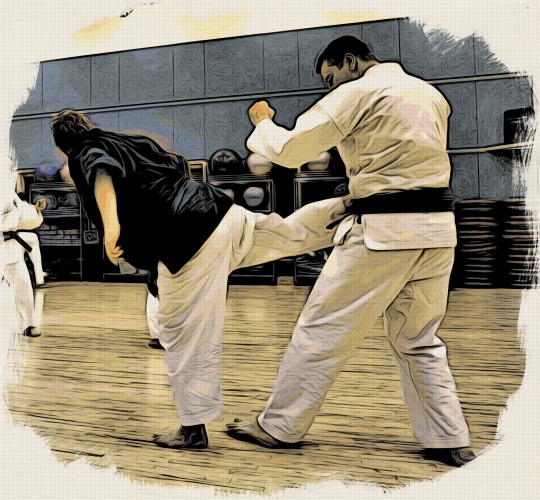
CHRONICLES OF
THE DOKA
#35 in a continuing series
(84 days in the teaching life of an American sensei in 1999)
I
have a devoted teaching staff. Fifteen years ago, in the 1980’s, I could
singlehandedly teach a class with as many as fifty-five children. That was the
limit of my instructional ability and fortitude. It’s impossible for any
teacher today to hold the attention of that many children in an hour
class. (This is ever truer in 2016) Even though I can boast of an additional fifteen years
more teaching experience and classroom techniques, I have witnessed gradual, disturbing changes in young students
attention every September—a defining month for the whole year.
I
sum it up as— Kids in Crisis!
The
responsibility of my assistant teachers is to corral and correct the lower ranks behaviors and techniques. I
take the difficult yellow belt group: Bobby B., John and Kathleen. They all fool
too much. There is Mallory, and Carmen the happy but overweight young boy. The six
of us drill a basic routine for forty-five minutes. I constantly adjust cadence and
focus to steer clear of the dreaded boredom that frequently sets in whenever a
child must repeat a sequence.
A major concern among elementary school teachers has
been the struggle to quell the boredom that really underlies the problem of a confused and
disorganized child who suffers from anxiety about the complexity and purpose of his or her life.
Dharman splits his orange and
blue belt group. Vin G. presses Dharman for more Seisan kata moves. Dharman wisely holds
the boy back after observing him race through his form with absolutely no
attention to detail. Whenever Dharman tries to correct Vin, the boy says, “I’ve already
done it”. Kid’s simply don’t grasp the fine detail necessary of kata training.
Anyone who claims that such detail is unnecessary misses the essential nature of kata work.
I ask a new class,”What is the difference
between a mediocre, intermediate, and advanced karate student? “Attention… to…. detail. It
separates the novice from the master.
Iron Arms, Jeff, arrives from Pennsylvania to
assist in class. Jeff drills a group of green and brown belts on kata,
then pairs them for bunkai.
“Try to extract some fire from Roberto,” I
tell him. “He’s being tested for brown next week.”
I drive home for my final class, a semi-private
class with Jeff and Tom.
“I want to digress from the wrist and
hand work we’ve been doing for the last year and delve into the leg gates which
we can test on the wave bag. I roll out my red Wavemaster punching bag from the corner of
the room. It looks like some kind of mortar cannon.
Tom is a hand man. The kicking drills round
him out and he knows it.
“I’ve got a challenge for you two. I want
you to knock over the wave bag with a back kick. But you must stand just a foot
length away from the bag, with your feet a few inches apart. Can you tip it
over without falling forward?
“Oh, Judas, not this,” Jeff laments. I’ve
frustrated Jeff with this challenge before. He remained in the dojo for one
hour once trying to knock the bag over, this way to no avail. It’s not simple. The water
filled vinyl bag weighs about 250 pounds. To knock it over from this close
distance requires a precisely aligned body position and the proper transfer of
weight through the legs.
The
back kick is a powerful technique, but not everyone extracts the maximum force
from it. It may seem slightly counter-intuitive, but you must slightly arch your
back into the kick to carry the appropriate weight into the bag.
Attend to the detail!
